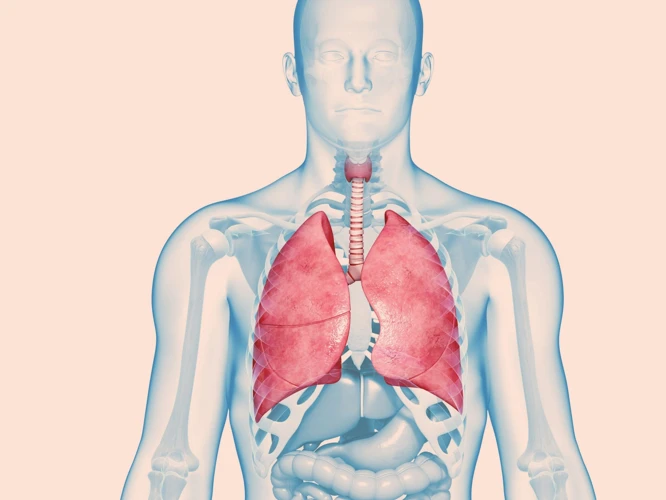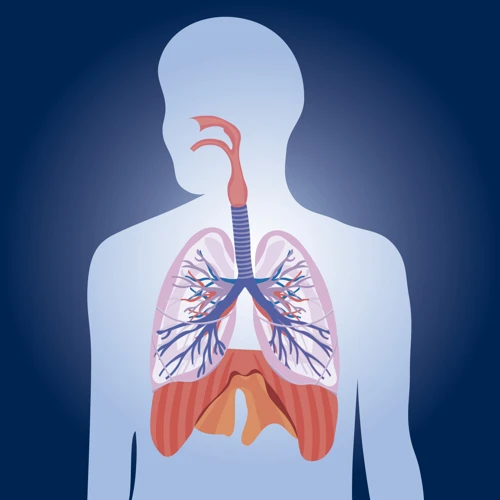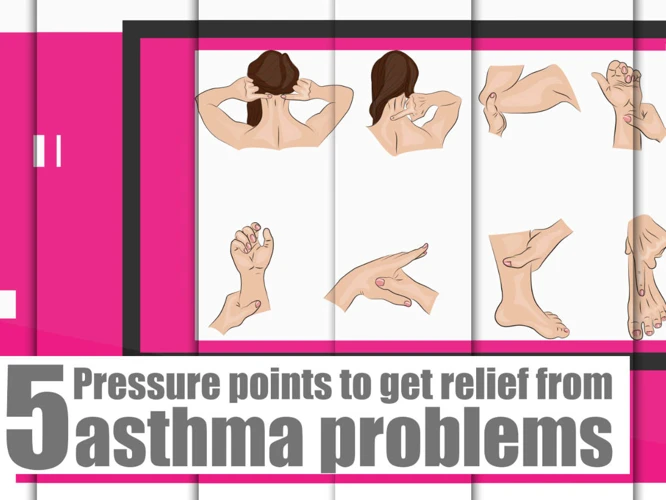Are you looking for an easy and effective way to massage mucus out of your lungs? If so, you’ve come to the right place. In this article, we’ll show you how to massage mucus out of your lungs quickly and easily. We’ll discuss the benefits of massaging mucus out of your lungs, how to do it correctly, and what you should do if the mucus doesn’t come out. So keep reading to learn how to massage mucus out of your lungs effectively and easily.
Contents
Benefits of Massaging Mucus Out of Lungs

Massaging the lungs is a powerful tool to help clear the lungs and reduce inflammation. Massaging the lungs helps to break up and expel mucus, which can help to reduce coughing and wheezing. It can also improve oxygen delivery to the lungs, which can help improve breathing and reduce fatigue. Massaging the lungs also helps to improve circulation in the area, which can reduce inflammation and pain. Additionally, massaging the lungs can help to improve overall lung health, reducing the risk of developing lung diseases such as COPD, asthma, and bronchitis. Finally, massaging the lungs can help to reduce stress and improve relaxation, promoting better overall health.
By learning how to massage lungs and incorporating it into your health regimen, you can reap the many benefits of massaging the mucus out of your lungs. Massaging the lungs can help to reduce inflammation, improve breathing, reduce coughing and wheezing, and reduce stress. Moreover, it can help to promote overall health and reduce the risk of developing lung diseases. Massaging the lungs is a simple and effective way to improve your health and wellbeing.
Steps to Massage Mucus Out of Lungs

Preparation
It is important to prepare for mucus massage by taking a few steps. First, make sure that you are in a comfortable position that allows for easy breathing. You should also wear loose-fitting clothing to ensure that your body is relaxed. Additionally, gather any necessary supplies such as a towel, a massage oil, and a massage table or chair.
Massage Technique
To begin the massage, start by gently rubbing your chest in a circular motion. This helps to loosen the mucus in the lungs and make it easier to expel. Next, use two fingers of one hand to massage the area around your ribcage. Move your hands in a circular motion, focusing on the area where the ribcage meets the chest.
Considerations
When massaging your lungs, it is important to be gentle and not to apply too much pressure. Additionally, if you experience any discomfort during the massage, stop immediately and consult a healthcare professional. Finally, it is important to stay hydrated and take deep breaths to help the mucus move more easily out of the lungs.
Note: Always consult a healthcare professional before using any type of massage therapy to treat a respiratory condition.
Tips to Make Massaging Easier and More Effective

- Use a lubricant: Using a lubricant such as coconut oil or Vaseline can help reduce friction caused by massaging the chest and make it easier to massage mucus out of your lungs.
- Find the right spot: Identify the spot where the mucus is stuck and concentrate your massage on that area.
- Make circular motions: Use smooth and gentle circular motions to massage the chest and help loosen up the mucus.
- Apply pressure: Apply moderate pressure to the chest with your hands or a massager to help loosen up the mucus.
- Take deep breaths: Take deep breaths during the massage to help move the mucus.
- Frequently replace the lubricant: Replacing the lubricant regularly will help keep the massage area from becoming irritated.
- Keep it up: Keep massaging regularly to help clear up the mucus.
Additional Remedies for Excess Mucus

1. Steam Inhalation: Steam inhalation is an effective remedy for loosening the mucus and helps to remove it from the airways. Put a few drops of eucalyptus oil in a pot of boiling water, place your head over the pot, and inhale the steam. This will help to thin the mucus and make it easier to expel.
2. Saline Nasal Spray: Saline nasal sprays help to thin and loosen mucus, which can make it easier to expel. It is best to use a spray containing xylitol or saline, as this helps to protect the mucous membranes.
3. Onion: Eating raw onions can help to reduce the amount of mucus produced. Onions contain powerful antioxidants that help to reduce inflammation and clear the airways.
4. Ginger: Ginger is an effective remedy for reducing inflammation and clearing mucus from the lungs. Drinking ginger tea several times a day can help to reduce the amount of mucus produced.
5. Garlic: Garlic is a powerful natural antibiotic and is effective for reducing inflammation and clearing mucus from the airways. Eating garlic cloves or drinking garlic tea can help to reduce the amount of mucus produced.
6. Hot Water: Drinking a glass of hot water with a little honey and lemon can help to reduce the amount of mucus produced. The hot water helps to thin the mucus and make it easier to expel.
7. Coughing: Coughing helps to clear the airways and can help to reduce the amount of mucus produced. To make this more effective, inhale deeply and then exhale forcefully. This helps to loosen the mucus and make it easier to expel.
When to Seek Medical Help
If you have difficulty breathing, chest pain, or a fever, it is important to seek medical help right away. You should also see a doctor if you experience any of the following symptoms:
- Coughing up blood
- Pain or tightness in your chest
- Increased mucus production
- Wheezing or difficulty breathing
- Fever that lasts for more than three days
- Frequent coughing or coughing for more than three weeks
- Congestion that does not improve with home remedies
If you are experiencing any of these symptoms, it is important to seek medical attention immediately. A doctor can provide the necessary medical treatment to help you get better.
Frequently Asked Questions
What are the benefits of massaging mucus out of the lungs?
Massaging mucus out of the lungs can help improve breathing, reduce congestion, improve drainage, and reduce the risk of infection. It can also help reduce coughing episodes, which can help improve sleep quality. Massaging mucus out of the lungs can also help improve lung function and reduce inflammation. Additionally, it can reduce the risk of complications from mucus buildup, such as pneumonia, bronchitis, and asthma.
Is Massaging Mucus Out of the Lungs Safe?
Yes, massaging mucus out of the lungs is generally safe, as long as it is done gently and with the proper technique. It is important to pay attention to the body’s response to the massage and to stop if any discomfort is felt. Consulting with a doctor before trying any new techniques is always recommended.
Are There Any Potential Risks Associated With Massaging Mucus Out of the Lungs?
Yes, there are potential risks associated with massaging mucus out of the lungs. These risks include:
- Infection – Massaging the lungs can cause bacteria and other microorganisms to enter the lungs, leading to infections.
- Irritation – Massaging the lungs can cause irritation, inflammation, and even damage to the delicate alveoli.
- Damage to the airways – Massaging the lungs can cause the airways to become blocked, making it harder to breathe.
- Breathing difficulties – Massaging the lungs can cause difficulty in breathing, as the mucus can become thick and difficult to clear.
Therefore, it is important to take all necessary precautions when massaging mucus out of the lungs. It is also important to seek medical advice before attempting any self-massage of the lungs.
What are the Best Techniques for Massaging Mucus Out of the Lungs?
Deep chest massage, chest percussion and postural drainage are the most effective techniques for massaging mucus out of the lungs. Deep chest massage involves using the fingertips to apply firm, rhythmic pressure to the chest wall in order to loosen and move the mucus. Chest percussion involves striking the chest wall with the fingertips and then cupping the hand to create a vacuum to draw out the mucus. Postural drainage involves positioning the body in various positions to allow gravity to help move the mucus out of the lungs.
How often should I massage mucus out of my lungs?
- Daily: If you have a chronic respiratory condition or are prone to mucus buildup, daily massaging of your lungs can help reduce the amount of mucus that accumulates.
- After a cold: After a cold or respiratory infection, it can be beneficial to massage the chest and back to help loosen the mucus and make it easier to cough out.
- During a flare-up: During a respiratory flare-up, when symptoms are more severe, massaging your chest and back more frequently can help loosen the mucus and make it easier to cough out.
It is important to note that the frequency of chest and back massaging should be tailored to your individual needs and symptom severity. If you are unsure of how often you should massage the chest and back, consult your doctor for advice.
Conclusion
Performing a chest massage is an effective way to promote mucus clearance from the lungs. It should be done in combination with other treatments such as coughing and postural drainage, and it can be done in the comfort of your own home with the help of a partner. Always consult a healthcare professional before beginning any new treatment.

